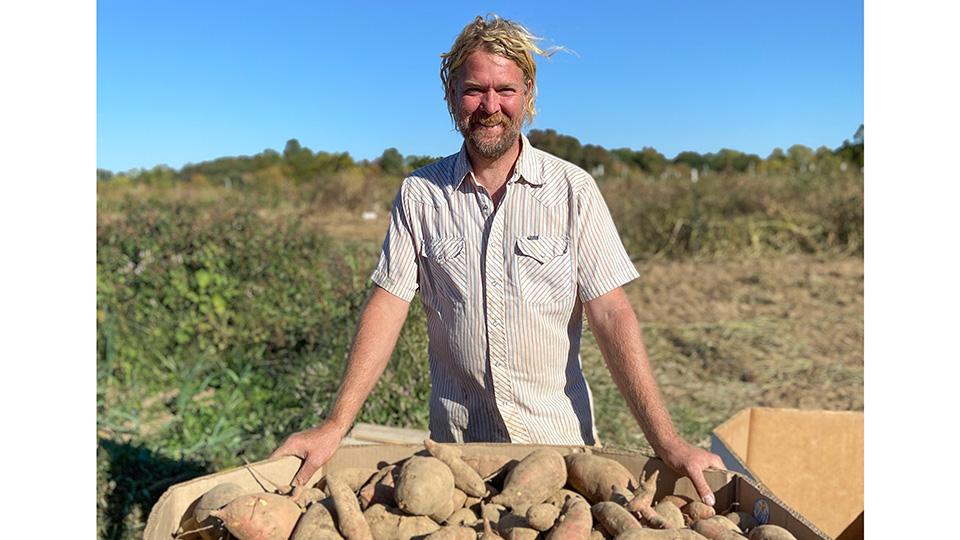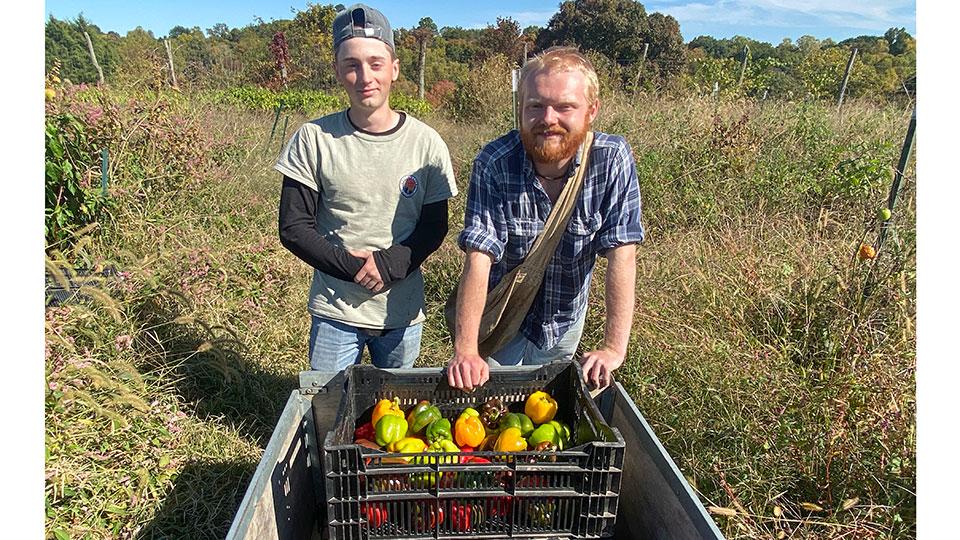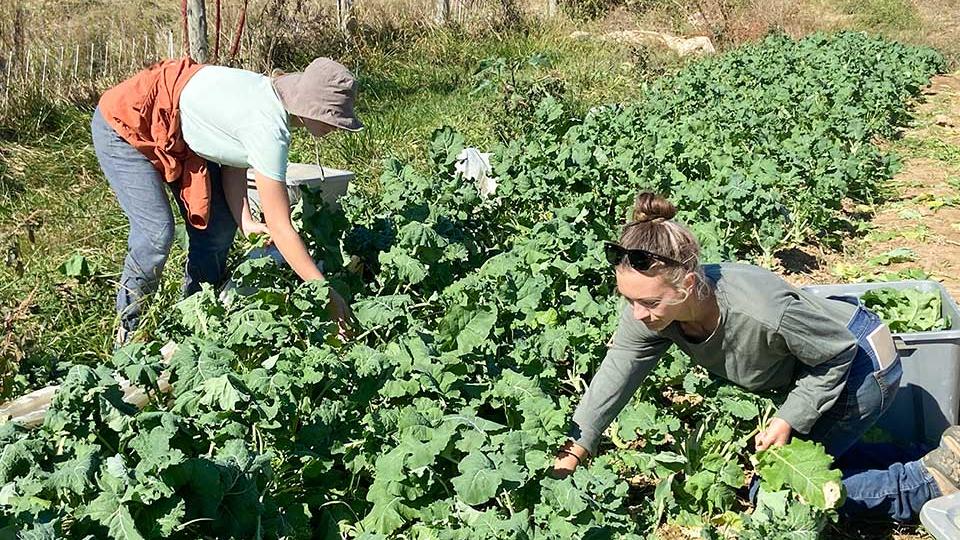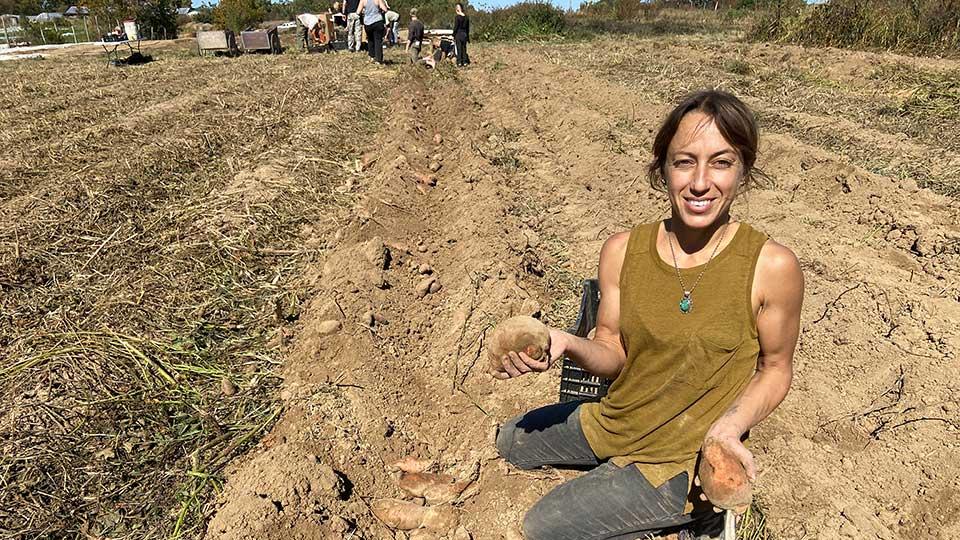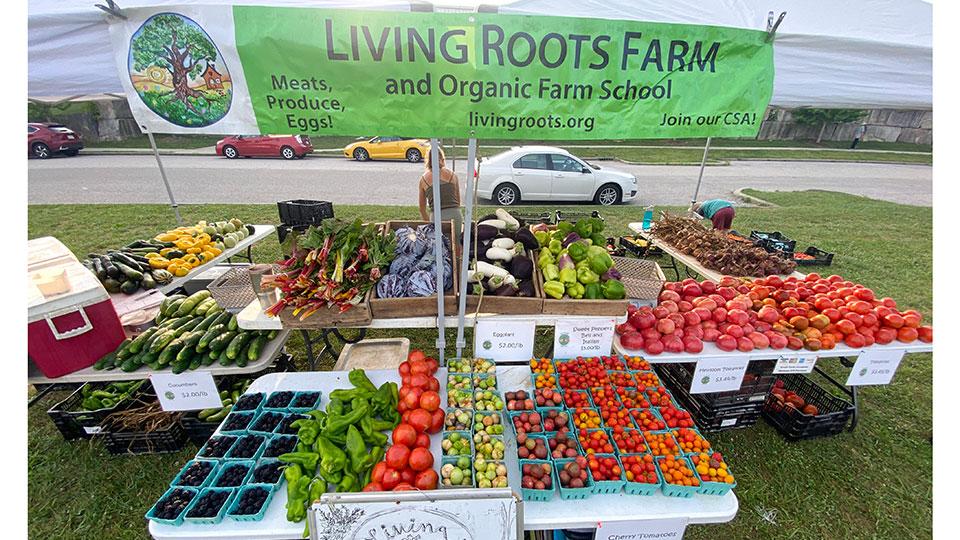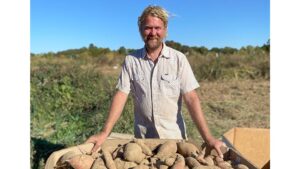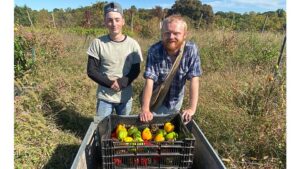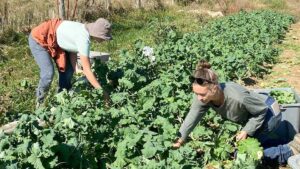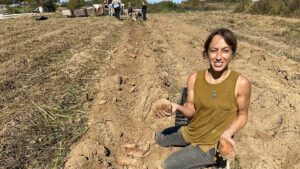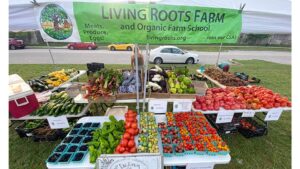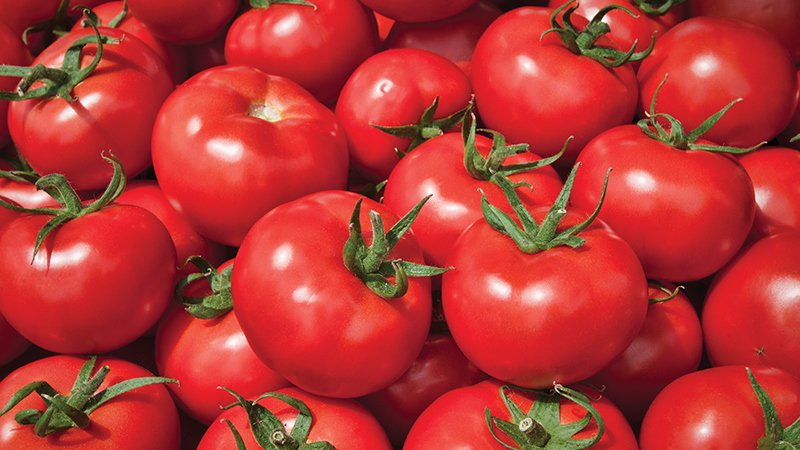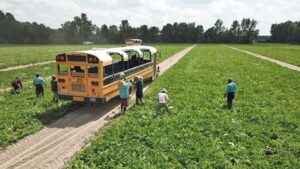How Living Roots Farm Is Planting Seeds of Success for New Growers
Like many first-generation farms, Living Roots Farm and Organic Farm School has slowly redefined itself as it learns its potential, its markets, and its mission.
Owner Michael Hicks started the farm in his mid-20s, fresh off a typical business school grad trajectory. After a stint with a large chemical corporation, then as the finance director of a $55 mil-lion organic body care company, Hicks knew he was on the wrong path.
“It was my smack on the face to choose where I’m putting my energy,” he says.
So he turned to farming and eventually to passing on his knowledge to students. Soon he found land about an hour south of Bloomington, IN, and started farming.
“I was doing some of the things people do when they come here. Just taking care of a piece of land to make a difference here and to give local people an opportunity of buying,” Hicks says.
He started off with an on-farm market and other hyperlocal projects but soon realized he needed to adapt his business model to have a healthier profit and loss statement.
“We’re out in the middle of the country near small towns. So there’s not too much market here. That’s why we don’t have a food stand anymore,” he says.
Living Roots Farm now sells to markets in Bloomington, which has a strong local food scene. About four years ago his team began once-a-week deliveries to Indianapolis, a four-hour roundtrip drive.
“Indianapolis is highly underserved from a local food perspective,” he says.
Hicks’ vision in his mid-20s was to make a difference and pour his skills and passions into farming. He landed on a brilliant way to do that: teach.
Full Emersion Learning
Living Roots Organic Farm School aims to spread Hicks’ vision beyond his 75 acres. He gives growers hands-on training in three-month semesters, creating skilled growers.
It’s a “place for people to come to really focus on the kind of learning and living that they want to do and to help them create their own farms or homesteads,” he says.
Most of Hicks’ students did not grow up on a farm, even if they’re from the country.
“It’s new stuff for the majority of people we have,” Hicks says.
Hicks’ grandfather was an organic gardener in the 1950s, before it was a widespread practice. As a result, Hicks learned nuances of organic production from the cradle, although he says he still had a lot to learn about farming as an adult.
“My son is 9 years old, and he’s learning things I learned in my 30s or 40s,” he says.
His school aims to help those with no agricultural background but who want to farm for a living to catch up with those who grew up on a farm.
“They’re getting the whole realm,” Hicks says. “I want to show them what it really means to be a farmer and have it in your blood; how you wear all the different hats and have thousands of details in your back pocket.”
How the Farm School Works
Students at Living Roots Organic Farm School get room and board included with their education.
As for financing, “there’s no student loans or funding — there’s no fees,” Hicks says. Rather, Hicks pays them a stipend, giving them free housing and meals. It resembles a traditional apprenticeship program from an earlier era.
The students range from kids straight out of high school, some who are in college, some who have left college because it wasn’t for them, and some in their mid-20s. He’s hosted several over 60, as well.
“It’s mostly younger people, and they don’t have access to much funding. That’s why it works. It’s better for us to provide all, and that’s a part of their exchange,” he says.
Between 12 and 20 students attend Living Roots Farm School in any given year. Due to the size of his farm, Hicks turns away hopefuls more often than
he likes.
“We go months without being able to accept any new people,” he says.
Applications come from across the country. With the pandemic, applications became more local, but Hicks says it is shifting back to a pre-COVID pattern.
Students typically stay anywhere from one to four sessions — sessions are two-and-a-half months. Each session falls within a growing season since the farm produces year-round.
Education is the Core
The No. 1 thing students receive is education, Hicks says.
“Every apprentice who comes through gets the basics. Everyone’s going to be harvesting, everyone’s going to be starting seeds,” he says.
There is indoor formal education time during the week. But most of the learning takes place by doing the work.
“It’s not like going to a university. We have a lot of people who’ve gone to universities or are doing so still. It’s experiential. That’s what people are lacking,” Hicks says.
They’re also learning the business side of farming, from setting prices to sales to marketing. But he’s found the younger students tune out those lessons.
“They’re just not there yet. It’s enough to just take in the farm, even though that’s what they need,” he says.
That’s why he takes time each week to meet one-on-one with them to answer questions and give them a chance to speak up about whatever is on their minds.
“For the ones who do want [business training], I can take them as deep as they want,” Hicks says.
Hicks is not the only teacher. The apprentices also learn from full-time staff members. There are about as many staff members as there are apprentices, although apprentices rotate through.
About once a month Hicks hosts a workshop for his students. Most who sign up for the program are interested in an overall sustainable lifestyle. Guest teachers offer tips on how they can achieve those goals, beyond farming.
A good sample topic is embracing a healthy diet.
“You can’t be a good produce farmer if you can’t take care of your body,” Hicks says.
So, he offers culinary and other cooking classes, including scouting and preparing wild edible plants, making fermented items like yogurt, and even natural health boosters.
Legacy in the Making
Just as the farm has shifted to better fit its market opportunities, so has the school.
In the beginning, all students boarded at the farm. But some locals with housing wanted to participate, so Hicks has adjusted to his students’ needs over the years.
It used to be a full-time program only, but Hicks created a basic program that runs three days a week. Hicks believes the full-week program is still the most effective.
Hicks keeps in touch with several of his former students. Some have their own farms, others started homesteads where they can live independently. Most, however, are working in agriculture, filling a much-needed labor shortage.
In the process, an even deeper need is filled: It gives students a true understanding of farming life.
“It potentially changes their whole life. They’re not just living, they’re living and breathing farming,” Hicks says.
At a Glance: Living Roots Farm and Organic Farm School
Owner: Michael Hicks
Location: Bloomington, IN
Founded: 2004
Size: 75 acres
Crops: Greens, onions, garlic, tomatoes, peppers, potatoes, sweet potatoes, eggplant, melons, roots, squash, cucumbers, figs, berries, tree fruits, beans, and corn
Customers: Farmers’ markets, online farmers’ markets, community-supported agriculture, and cooperative grocery stores




